Introduction (Major Updated ~ 4/2014)
The term “Kinsman Redeemer” (Hebrew: goel, [H1350] translated: “kinsman” ~ Num. 5:8; 27:11; Ruth 2:1; 3:9, 12, 13; 4:1, 3, 6, 8, 14; John 18:26; Romans 16:11) is the title for a position of responsibility within an Old Testament Hebrew family which was established by God.
This individual was entrusted with the ability to protect, as well as seeking justice when a family member was wronged; as a way of maintaining righteousness within the tribal society of Israel.
We might refer to this position as the godfather of the Hebrews, yet in a legal and moral function, as compared to one of criminality and abuse.
The idea of the Kinsman Redeemer held two different functions / roles within the same title.
The Two Roles
First, was the function / role of the “Goel” or Redeemer.
The idea was that if a man died without children, normally his brother, or Goel (Next in line of kinship), had an obligation to raise seed to the dead brother so as to keep his posterity going, along with the inheritance of the land.
He redeemed that man’s progeny, this is referred to as the “Levirate law.” (See Endnote #1)
Second, was the function / role of the “Avenger of Blood”(See Endnote #2).
Responsibility
When a “wrong” (Crime) was done to a single member of the family; it was considered a crime against the entire tribe, yet the responsibility was left to kinsman-Redeemer.
It should be remembered that at this time there was no social governmental structure within Israel that would carry on this function.
And even after there was a governmental structure installed, the kinsman-Redeemer still had the responsibility to maintain order and leadership within the family, wherein the government might utilize a punishment of those that had violated a tribe member, this did not override the role of the kinsman-Redeemer.
In the case of a murder committed, the kinsman-Redeemer would fulfill Justice by killing the murderer himself.
This was not looked at as revenge, but justice.
Regarding righteousness, according to the imagery set-up by God, the blood of the murdered man cried out from the ground for justice, and the cry was heard loudest by the member of the clan who stood nearest to the dead in kingship, the kinsman-Redeemer; therefore, the closest of kin would follow through as the blood avenger fulfilling this responsibility” (Genesis 4:1-16,10; See Endnote #3)
The family Has the Lead
We must remember that within a theocracy (A governmental system that ruled over men based upon God’s leadership, as opposed to monarchy, social rule or democracy), which is what Israel was; it is a system that does not believe that the government itself is responsible for the people, the tribe / family is.
Those that ruled a culture or society were not considered responsible for the welfare of the people in a direct manner as it is today.
The ruling party rather, a monarchy as in the King or Queen, a dictator such as a King, or a king who was a conqueror who captured nations and acquired lands, or a theocracy; the main responsibility of these governing powers was the cohesion of the nation itself, which did involve protection from outside forces, and the carrying out of the “laws of the land” in the form of maintaining justice, yet not the personal responsibility of individuals.
Within the nation of Israel, post Egyptian flight and pre kingship; based upon God’s commands, welfare if not met by the family was met by rules such as NOT collecting the fallen wheat as the crops were being gathered by owners. So that the poor could pick up what was left, called gleaning (See Endnote #4).
From the time of the inception of the church 2000 years ago, the churches has taken on meeting the needs of welfare regarding the poor, orphans, widows, and those disabled, this was not normally a function of the governments themselves.
Leadership Within the Family
Therefore it is an understanding that under God’s original design the family was responsible for its members, and within the family there was one central person who is considered the leader to fulfill the responsibilities of the family, this was the kinsman Redeemer. This is a Prophetic role that God established concerning the Messiah and mankind. The kinsman Redeemer had two roles which mirrored the two roles which Jesus plays out as seen in His First and Second Coming. This reflects the fact that as it was man who brought mankind into sin and judgment, righteousness to clear that only another man, who is righteous could bring mankind to redemption – this is what Jesus was to us, He is and was our kinsman Redeemer.
The Qualifications of the Kinsman-Redeemer
- First and foremost, there must be a blood connection, within the same tribe
(In the case of mankind, the Kinsman Redeemer must be a human) - Next, is the biological proximity concerning the family member
(In the case of mankind, the Kinsman Redeemer must be fully man, not an aberration) - Lastly, a willingness to fulfill the position
(In the case of mankind, the Kinsman Redeemer had to choose this responsibility)
Greater Detail
The Goel
Normally, the role of the Kinsman Redeemer, or Goel in the case of the death of an adult male without progeny, is to bear children to their name.
This is seen as part of the Levirate Law (Deut. 25:5-11) to fulfill the responsibility of the Goel, first to fall to the brother, to be accepted by him (See Gen. 38:11-30: the story of Tamar; Judah’s daughter-in-law, mother of Phares, listed in Luke 3:33 as part of the lineage of Christ, she is mentioned in Matt. 1:3), however, if a brother or one closest in bloodline refused, as seen in the book of Ruth, then the man that refused would perform a ritual of taking off his shoe and handing it to the next inline of kinship that would redeem the progeny and the land – this was a symbol of giving someone else your authority. (See Endnote #5)
The Avenger of Blood
This primarily dealt with protection, righteousness, and justice. If there was a murder of a family member, the kinsman Redeemer was responsible for bringing justice, referred to in this function as the “Avenger of Blood.” In the case of manslaughter or accidental killing, the accused was afforded the ability to escape the retribution of the Avenger of Blood if he could get to one of the six “Cities of Refuge” (Num. 35:16-29; Deut. 19:2-6) before the Avenger of Blood caught up with him. The accused would present his case before the elders of the city, and if accepted would be granted sanctuary.
The accused would only remain safe as long as he stayed within the City of Refuge (LINK), and was free to leave when the High Priest in Jerusalem died.
If the Avenger of Blood violated any of these conditions, he would be considered guilty of that murder, and the avenger of blood could take his life.
Further Research
The Book of Ruth
The best example that we have concerning the Kinsman Redeemer is seen in the Old Testament book of Ruth.
In this story a Hebrew woman, Naomi; who moves with her husband and two sons to outside the land of Israel to among the Moabites.
Her two sons marry local women, which were not Israelites, one of which is by the name of Ruth.
Eventually her husband dies, them both of her sons die.
Naomi decides to move back to Israel and advises her two daughter-in-law’s to go back to their families and live.
Yet, Ruth refuses to leave Naomi, and goes with her back to Israel.
Naomi’s husband had sold (Leased until the year of Jubilee, meaning 50) their property.
Therefore, Naomi and Ruth who had no finances, lived off of charity, that of gleaning the fields of wheat that was left over after the harvest.
Naomi, who was too old to glean, directed her daughter-in-law Ruth to go to the field of their kinsman redeemer, Boaz and glean his field in order to produce bread for their subsistence.
Eventually an unnamed servant introduced Ruth to the kinsman Boaz.
Boaz made sure that extra droppings were left for Ruth and Naomi to pick up.
Naomi gave specific instructions to Ruth on how to secure back the property of Naomi’s husband’s family, and gain an inheritance by marrying the kinsman and bearing children.
During the harvest festival there was a procedure whereby after Boaz had went to sleep on the floor of the grain threshing floor (so as to protect the grain that they had thrashed, separating the wheat from the chaff), Ruth was to go to sleep at his feet, and cover up with the hem of his overcoat.
Traditions
The Hem
The Hebrews had a tradition that the hem of their overcoat would display emblems which would identify their position within the family and their authority (Remember the story of the woman that touched the hem of Jesus garment, She was recognizing his authority wherein she could access healing. Also, remember the story of David repenting of having cut Saul’s hem. The reason why David repented indicating this was a sin was because he was challenging the authority of Saul being King), similarly to how military soldiers wear patches on their arm, or ensign on their caller to identify their rank.
Ruth completed this, and during the night Boaz awoke, and she petitioned him to marry her under the law of Levirate marriage.
Boaz agreed, but determined that there was another kinsman closer in relationship to her.
Therefore, Boaz approached the individual, and managed to obtain the right of the kinsman redeemer (Deut. 25:5-11).
In doing so, this gave him the right to purchase back the land for Naomi’s lineage, and raised up children for Ruth and her inheritance as one of the tribes of Israel.
One of Ruth’s sons is named in the lineage of Jesus as stated above.
Why – For our learning
So why is this important? Romans 15:4 states:
“For whatsoever things were written aforetime were written for our learning, that we through patience and comfort of the scriptures might have hope.”
It is in understanding that everything in God’s Word is therefore for a purpose, and everything that God has communicated, especially those things that seem mundane are there as object lessons to teach us – In this case to set up a prophetic role that had two functions which the Messiah would fulfill – wherein Israel could recognize your Messiah.
God set up the institution of the kinsman redeemer in order to produce a type, a model of what was necessary for Jesus Christ to do in order to die for the sins of the world.
It was the failure of the man Adam which led to his lineage being cursed as sinful creatures, and according to God’s justice; this would necessitate another man to do the opposite; to respond in faith which would mandate that He be sinless.
Sin is alway produced because of a lack of faith.
Wherein Adam did not have faith in God wherein he would trust that God would give him a mate he would love as much as Eve, and therefore chose not to trust God and to go his own way.
Sin is choosing to do things man’s own way rather than trusting God, no matter how difficult the situation becomes.
Why – For God’s Righteousness
Righteousness in mercy do not function together. If you are a judge and you give out mercy then you are not being righteous. Hence, how could God be merciful the man and yet still righteous concerning sin.
Righteousness demands that sin is punished.
God therefore made sure that sin was punished by him who did not deserve it, so that those that did deserve it could receive the blessing Of him that did.
Jesus was treated like us, so that we could be treated like Jesus.
All of this is done so that God could be both righteous by not merely forgiving sin without punishment,as well as merciful by giving man an opportunity to re-enter fellowship with him, God’s righteousness demanded a radical answer to the problem of man’s sin.
Since the offense came by man, righteousness demanded that the answer come by man.
This is why Jesus had to become a man to save mankind.
Jesus maintained the essence (See the article on: “Essence and Attributes” ~ LINK) of his deity, in that the Holy Spirit came upon Mary, wherein Jesus became a human.
This is where we get the term “begotten” regarding Jesus as seen in John 3:16,
“For God so loved the world, that he gave his only begotten Son, that whosoever believeth in him should not perish, but have everlasting life.”
Jesus, prior to his incarnation (Becoming human), has always been eternal and divine.
Yet, by impregnating a human woman by God’s Spirit, He became a man.
His essence was still deity, remembering that essence is that inward part that cannot be seen, which is the internal makeup of His personage – who he was in reality.
Yet, He became fully man as well, having a human mother Mary; and as a human had the attributes of a man, remembering that attributes are the outward expression, the behaviors, actions and limitations of humanity, which included death.
The Incarnation
Of all the mysteries of God the incarnation is perhaps the most mysterious.
The fact that Jesus Christ has always been the eternal Son of God, Who became begotten – born of men; how mind-boggling is this.
One Scripture that shows both of these aspects, His divinity and his humanity is Isaiah 9:6-7, which states:
“For unto us a child is born, unto us a son is given: and the government shall be upon his shoulder: and his name shall be called Wonderful, Counsellor, The mighty God, The everlasting Father, The Prince of Peace. Of the increase of his government and peace there shall be no end, upon the throne of David, and upon his kingdom, to order it, and to establish it with judgment and with justice from henceforth even for ever. The zeal of the LORD of hosts will perform this.”
This Old Testament prophecy points out that the Messiah to come, who in time is known as Jesus of Nazareth; He would be born as a child; yet He was a son – He is called The mighty God.
Jesus, during his incarnation was fully God and fully man; and here’s the big surprise; Jesus is still fully God and fully man as he sits upon the throne of His Father awaiting His Own throne, remember what Revelation 5:3-4 concerns, that a “man“ was “worthy” to “open the book,” which is later identified as Jesus.
The grammar is present tense meaning that Jesus is still a man, while also fully God.
His Role
Jesus lived a sinless life by always choosing to exercise faith in God, never sinning, thus He did not deserve the curse of the law; yet took the curse upon himself and trade for humanity.
How many times have unbelievers and believers alike said, it is not fair that all of humanity would pay the price of eternal damnation because of one man’s choice, Adam’s decision.
Yet, the righteousness of God is seen in that Humanity is saved, with the penalty of sin paid for by one man’s choice, Jesus decision to take our place.
There is both quality and justice in the trade; wherein God’s righteousness is maintained, while at the same time displaying mercy and grace.
This is the reason for 1 Corinthians 15:22, which states:
“For as in Adam all die, even so in Christ shall all be made alive.”
And 1 Corinthians 15:45, which states:
“And so it is written, The first man Adam was made a living soul; the last Adam was made a quickening spirit.”
The only way that God could save fallen man was by Jesus becoming our kinsman Redeemer, by both purchasing us with His blood; while at the same time killing death for the sake of His family – humanity (And in the second coming destroying the enemies of his people).
Jesus stated in John 5:39:
“Search the scriptures; for in them ye think ye have eternal life: and they are they which testify of me.”
All of God’s Word has one purpose, and no it is not the salvation of man, it is the glorification of God (“Even every one that is called by my name: for I have created him for my glory, I have formed him; yea, I have made him.” ~ Isaiah 43:7), and His Son Jesus Christ (Ephesians 1:20-22; Romans 11:36; Colossians 1:12-19).
It is Jesus that deserves preeminence in God’s Word.
All of these Old Testament types and shadows (Hebrews 8:5; 10:1; Colossians 2:17) and figures (Theologically referred to as “Expositional Constancy” ~ See Endnote #6) were meant as object lessons to paint the picture of the Messiah, so that He would be recognizable when He came.
And we know that He came in the person of Jesus Christ.
It is Jesus the Christ that is our Kinsman-Redeemer
To Reiterate
The kinsman Redeemer had two main functions, that of redemption of man, and the justice of avenging evil and sin against His people, Israel.
It is Him that came the 1st time to redeem the world with His blood, and it is Him that will come the 2nd time as the Avenger of blood to save Israel and destroy His enemies wherein the justice of avenging evil and sin is performed.
This is why it is so important that we understand that Jesus was the ultimate example of faith (See “Jesus ~ The ultimate example of faith” – LINK).
He did right what Adam did wrong.
He trusted God even though He would die.
He allowed Himself to become a man, after having spent eternity as God.
On the promise that God would resurrect Him, and restore Him to His state, that Christ would sit in God the Father’s throne, until all was fulfilled; and Christ would come the 2nd time to redeem Israel, destroy his enemies and then will sit on the throne of David(“And, behold, thou shalt conceive in thy womb, and bring forth a son, and shalt call his name JESUS. He shall be great, and shall be called the Son of the Highest: and the Lord God shall give unto him the throne of his father David” ~ Luke 1:303132), a throne that He was ultimately meant to rule from (for thousand years until always completed and there is the new heaven and new earth ~ Revelations 20:2-6), for a thousand years.
Endnotes
1. Deuteronomy 25:5-10; Ruth 3:9-12; Genesis 38:8.
2. Numbers 35:12; Deuteronomy 19:6, 12; Joshua 20:3, 5, 9.
3. HOLMAN BIBLE DICTIONARY, Trent C. Butler, Ph.D., Holman Bible Publishers, Nashville, TN, 1991, page 848.
4. God in His wisdom had set up a system where if individuals had no income or food, they could survive in Israel by going through fields after they had been harvested the wheat, and salvage the reminiscence that were dropped. This was referred to as “gleaning a field” (Lev. 23:22).
5. Ruth 4:5-10.
6. Expositional Constancy
Expositional Constancy is the repetitive use of the same(uniform)idioms throughout Scripture, both in Hebrew and Greek; in symbolizing something in order to create an object lesson which enhances details in producing clarity.
God’s use of typology, which is a symbol, sometimes referred to it as a model or example, or biblically speaking a “shadow”; is meant to generate greater detail and precision in identifying something or someone. (Heb. 8:5; 1 Cor. 10:11; Rom. 15:4; 1 Cor. 10:6).
Hebrews 3:1-6 – Illustrates that God created the role of the earthly priest as an object lesson to later help identify Jesus’ role as the intercessor of mankind.
Heb. 8:4-5, describes how God caused the tabernacle to be fashioned specifically concerning its materials and construction in order to convey greater details in describing Jesus Christ as our substitutionary sacrifice, advocate, and the perpetuation to God in providing salvation to humanity. (Also see: 1 Cor. 10:4; Heb. 4:11; Heb. 10:1; & Col. 2:17).
A substance, principle or reality may have more than one typological symbol or idiom used as a model or illustration which God wishes to communicate, yet there is never an inconsistency in using the same typological idiom representing something else, that would therefore create any confusion concerning the symbolic representation.
Examples can be seen such as the use of a fire and cloud concerning the Holy Spirit as God led Israel across the desert, the fire for protection at night, and the cloud for relief from the desert sun – God’s protection and His Providence, His mercy and His grace.
The Holy Spirit depicted as anointing oil that was used to display God’s seal of approval on prophets and kings. The Holy Spirit depicted as a dove at Jesus baptism, to represent the peace of God landing upon Him.
The Holy Spirit depicted as cloven tongues of fire coming upon the church when it was established at Pentecost, using fire to express the power that came in the form of boldness to proclaim the gospel.
Throughout God’s Word every type of living creature, as well as substance is utilized to symbolize greater meaning in what God desires to communicate.
Jesus has over 333 titles, names and expressions; everything from Him pictured as the “Lamb of God,” to being the “Rock of our salvation.”
With the Bible depicted as living water, because of its cleaning sanctification.
There are usually many different types of symbols, yet complete consistency in that they always represent the same thing, without contradiction.
A rock is always used concerning Christ as the foundation of the church, the capstone.
A rock is never used for anything else.
Shadows, types, and figures are used to paint pictures which are to be object lessons for our own edification in order to understand with simplicity something or someone that on their own are quite complex, hence the 333 titles and descriptions of Christ from the Old Testament.
for more on this please see our master website, http://faithbibleministries.com/ the LINK to the: “Something to think about -Part 1” dropdown (“Rightly dividing the word of God”), see the index.
Brent

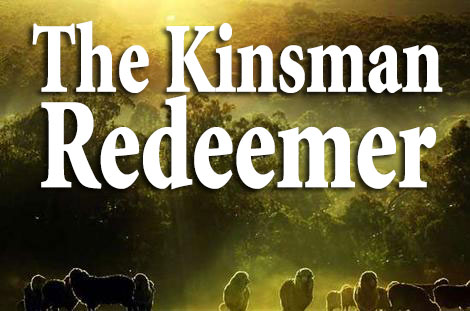

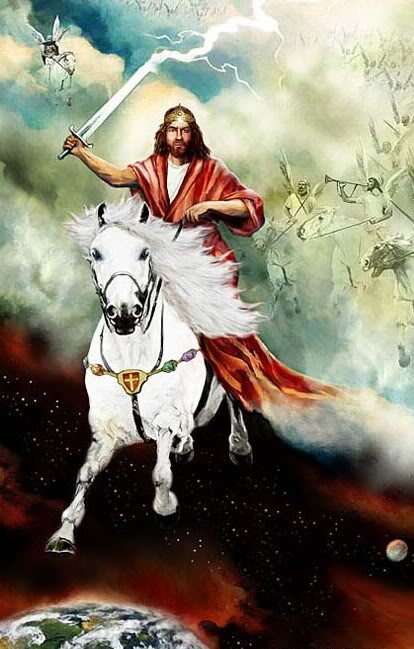

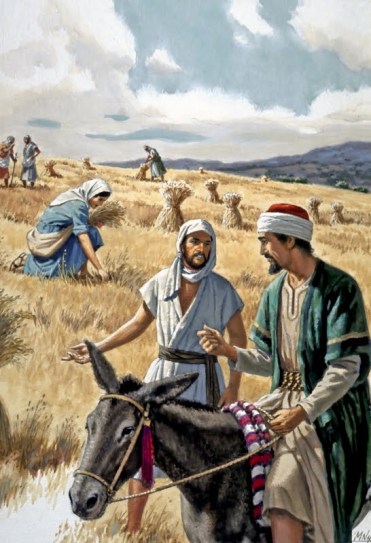


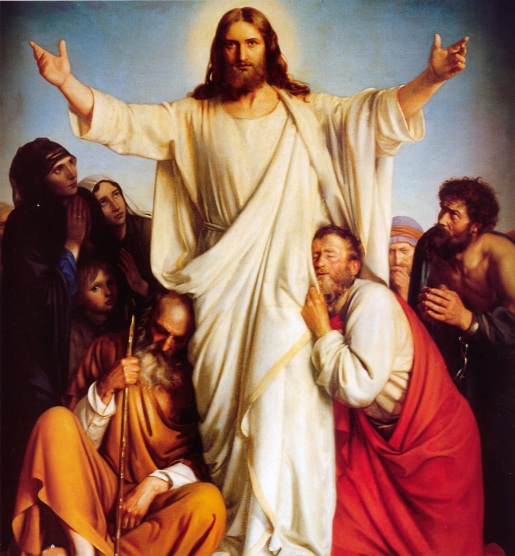
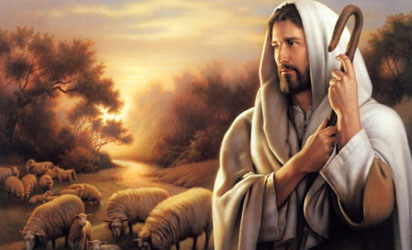
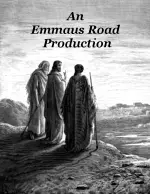
[…] Israel, the “Goal,” the “Kinsman Redeemer” (see our articles on the “Kinsman Redeemer“) who will slaughter His enemies with the word of His mouth (Rev. 19:11,15). Does the […]
LikeLike
[…] see the post entitled: “Kinsman Redeemer ~ Part 1 – A Brief Introduction” ~ Link ~ which makes the point of why Jesus had to become a man in order to atone for man’s sins), […]
LikeLike
[…] see the post entitled: “Kinsman Redeemer ~ Part 1 – A Brief Introduction” ~ Link ~ which makes the point of why Jesus had to become a man in order to atone for man’s sins), […]
LikeLike
[…] saints Deu. 33:2; Zec. 14:5; Jude 1:14; Rev.19:10-14; Dan. 7:10), the Kinsmen-Redeemer of Israel (LINK), who wages war upon the “earth dwellers” (“them that dwell upon the earth” […]
LikeLike
[…] saints Deu. 33:2; Zec. 14:5; Jude 1:14; Rev.19:10-14; Dan. 7:10), the Kinsmen-Redeemer of Israel (LINK), who wages war upon the “earth dwellers” (“them that dwell upon the earth” […]
LikeLike
[…] Israel, the “Goal,” the “Kinsman Redeemer” (see our articles on the “Kinsman Redeemer“) who will slaughter His enemies with the word of His mouth (Rev. 19:11,15). Does the […]
LikeLike
[…] Israel, the “Goal,” the “Kinsman Redeemer” (see our articles on the “Kinsman Redeemer“) who will slaughter His enemies with the word of His mouth (Rev. 19:11,15). Does the […]
LikeLike
[…] saints Deu. 33:2; Zec. 14:5; Jude 1:14; Rev.19:10-14; Dan. 7:10), the Kinsmen-Redeemer of Israel (LINK), who wages war upon the “earth dwellers” (“them that dwell upon the earth” […]
LikeLike
[…] becomes a human in the New Testament, a Kinsmen Redeemer (please see the article concerning “Kinsman Redeemer“), to die for the sins of the world as one of […]
LikeLike
[…] blood of our Kinsmen-Redeemer, Jesus the Christ. See our article on the Kinsmen-Redeemer ~ LINK and see concerning sacrifice and blood, see Endnote #7) by dying on the cross, becoming our […]
LikeLike
[…] see the post entitled: “Kinsman Redeemer ~ Part 1 – A Brief Introduction” ~ LINK ~ which makes the point of why Jesus had to become a man in order to atone for man’s sins), […]
LikeLike
[…] see the post entitled: “Kinsman Redeemer ~ Part 1 – A Brief Introduction” ~ LINK ~ which makes the point of why Jesus had to become a man in order to atone for man’s sins), […]
LikeLike
[…] Jesus functioning as the “Kinsman-Redeemer” Please see our article entitled: “Kinsman-Redeemer ~ Part 1 ~ A Brief Introduction“), beyond the 3 years of His ministry – they don’t consider the Old Testament […]
LikeLike
[…] Kinsman-Redeemer for mankind (please see the article entitled: “Kinsman Redeemer,” ~ LINK; which makes the point of why Jesus had to become a man in order to atone for our sins), Jesus had […]
LikeLike
[…] see the post entitled: “Kinsman Redeemer ~ Part 1 – A Brief Introduction” ~ LINK ~ which makes the point of why Jesus had to become a man in order to atone for man’s sins), […]
LikeLike
[…] becomes a human in the New Testament, a Kinsmen Redeemer (please see the article concerning “Kinsman Redeemer“), to die for the sins of the world as one of […]
LikeLike
[…] see the post entitled: “Kinsman Redeemer ~ Part 1 – A Brief Introduction” ~ LINK ~ which makes the point of why Jesus had to become a man in order to atone for man’s sins), […]
LikeLike
I was looking for something else and “happened to” click on your site. Beautifully and masterfully written! There are so many presentations of the kinsman redeemer all throughout scripture and as I read what you wrote, many other things came to mind. I’m sure you’re busy so I won’t comment about all of them, but wanted to point out something else interesting regarding Jesus and the Levirate law. For instance, Jesus raising up seed on behalf of Adam who died before “being fruitful” w/ his wife. It now makes perfect sense why Adam names her “mother of all living” as he, through the seed of the Goel, would be “born again” through her as well. It not only pointed out how God would save us by giving up His Seed AND “deliver” us as newborn babies through His own Body — but also the duality of our role now as both the “mother of all living” and the Goel, that others would be born again. Our seed (the woman’s seed), of course, being the One He gave us (like our father, Abraham). As I’m typing, this came to mind; “…by Grace, through Faith”. Grace being the seed and Faith being the womb.
Also interesting, a few months ago (also looking for something else) I stumbled on the Levirate law in Deut….and I immediately thought of John the Baptist. When the Pharisees were asking him why he was baptizing people if he wasn’t the Christ. After explaining the difference between his baptism and Christ’s, he makes the statement that he’s not “worthy to untie His sandal strap”. For years I thought John was simply comparing his own worth with that of our Savior, but no! He is absolutely speaking in regards to the Levirate law (of which they should have definitely been familiar) and the clue for me was hidden in the symbolism of Baptism. But that’s all I’ll say about that, lol.
Great teaching!
LikeLike
Thanks Dani, good insights; keep it up. This month I will start video lessons. I will let you know when and where. Your brother in Christ, Brent
LikeLike
[…] becomes a human in the New Testament, a Kinsman-Redeemer (please see the article concerning “Kinsman Redeemer“), to die for the sins of the world as one of […]
LikeLike
[…] becomes a human in the New Testament, a Kinsman-Redeemer (please see the article concerning “Kinsman Redeemer“), to die for the sins of the world as one of […]
LikeLike
[…] see the post entitled: “Kinsman Redeemer ~ Part 1 – A Brief Introduction” ~ LINK ~ which makes the point of why Jesus had to become a man in order to atone for man’s sins), […]
LikeLike